A candid conversation with one of the Vermont arts scene’s rising stars.
For as long as Benjamin Ward can remember, he has always been propelled by an intrinsic desire to work towards self-actualization. Ward is only 21 years old, but he has already forged promising partnerships with celebrated artistic institutions through a series of high-profile internships and collaborations. Clean-cut, well-mannered and articulate, Ward is quickly moving forward on the fast track to success in the art world. He operates with the poise and cultural awareness of a gallery owner far beyond his years, but his conversational affect is nevertheless grounded, humble, and intensely focused. Drawing on the valuable lessons that he has learned from his most influential mentors, Ward has created a dynamic exhibit, entitled ANTICIPATION, which showcases the work of talented Vermont-based contemporary artists. The exhibit is running at his self-started SQD GALLERY in downtown Manchester from August 30th to October 31st, and will serve as a pivotal launching point for Ward’s blossoming career in the art industry.
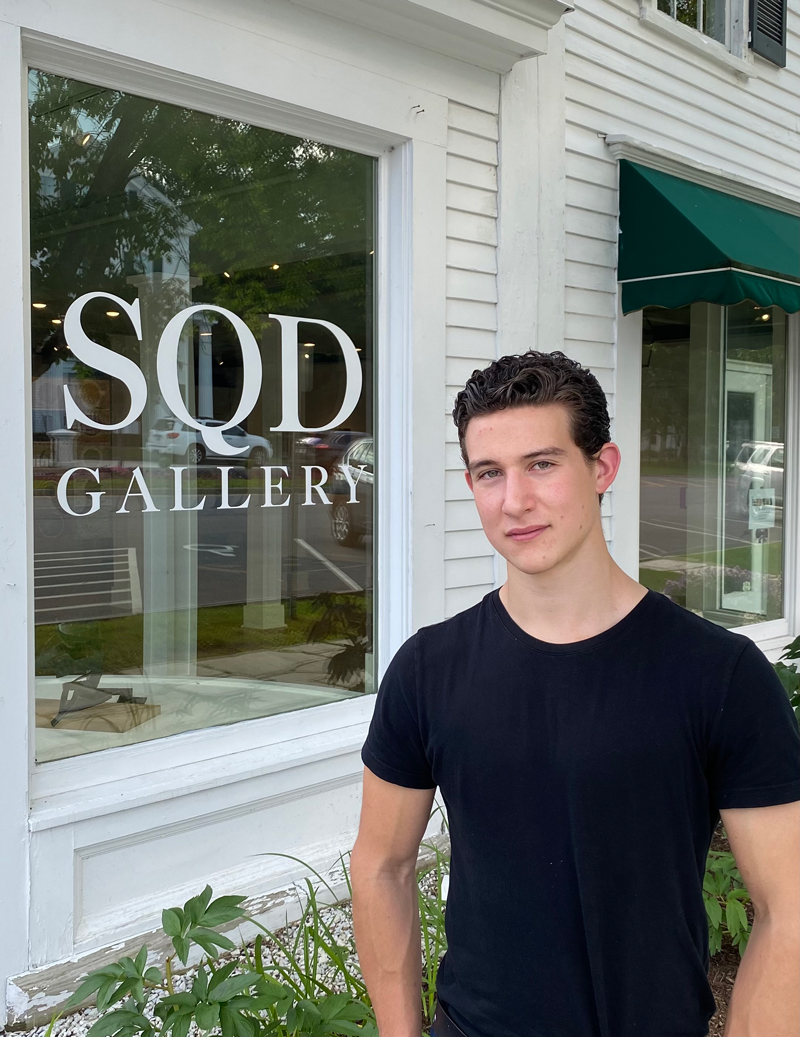
Ward spent his younger years in the idyllic town of Calais, Vermont, just outside of Montpelier. He was raised in a family that encouraged and nurtured his intellectual curiosity, and he pursued his childhood hobbies with vigorous enthusiasm. Back when Ward was a student at Montpelier High School, his budding interest in history compelled him to enter a statewide competition run by the Vermont Historical Society. When Ward won the performance category in the Vermont History Day contest, he felt a spark of passion ignite within himself.
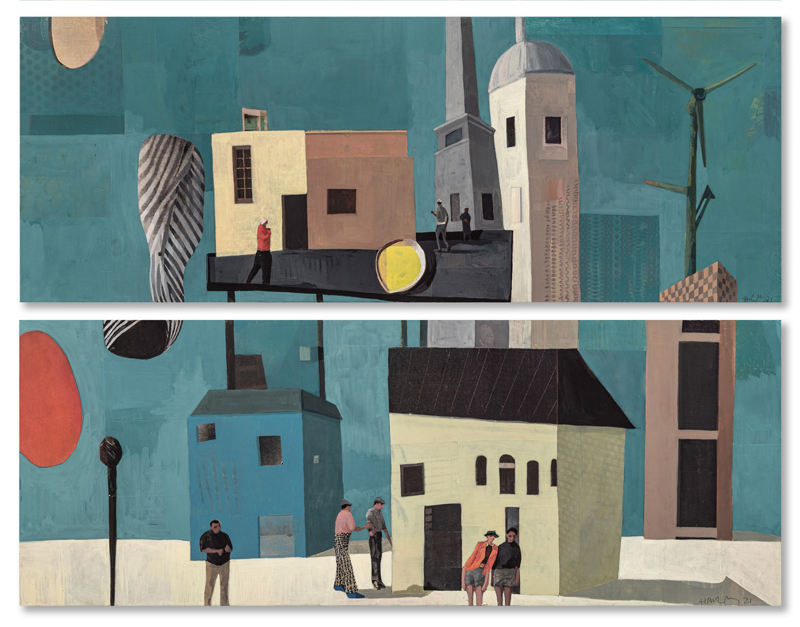
“It was a critical moment when I won that competition,” Ward recalls. “I still look back on that day with a sense of great fondness.” One of the judges who awarded him the prize on that fateful day was a man named J. Brooks Buxton. Buxton was a successful businessman and renowned art collector who bequeathed his entire collection of pieces created by Vermont-based artists to the University of Vermont’s (UVM) Fleming Museum of Art several years before he passed away in 2018.
“When Mr. Buxton and I spoke, he told me that I should reach out to Janie Cohen, the Director of the Fleming Museum,” says Ward. “Art had never played a large role in the earliest years of my life. I had always been passionate about poetry, blacksmithing and baking, but I decided to take a chance and apply for an internship at the Fleming Museum. I like to think that life sometimes presents amazing opportunities through serendipitous happenstance. I sent her an email, and we ended up connecting and really hitting it off. I did an internship at the Fleming Museum after my sophomore year of high school, and it really had an incredible impact on my life trajectory.”
Over the course of Ward’s internship at the Fleming Museum, he was swiftly catapulted into the fascinating world of art history. “I learned about historical research and all of the subtle influences that were present in the different artistic pieces. Cohen and I also wrote a research paper on Keith Haring together. It was a formative experience that truly cemented my love for art and art history.”
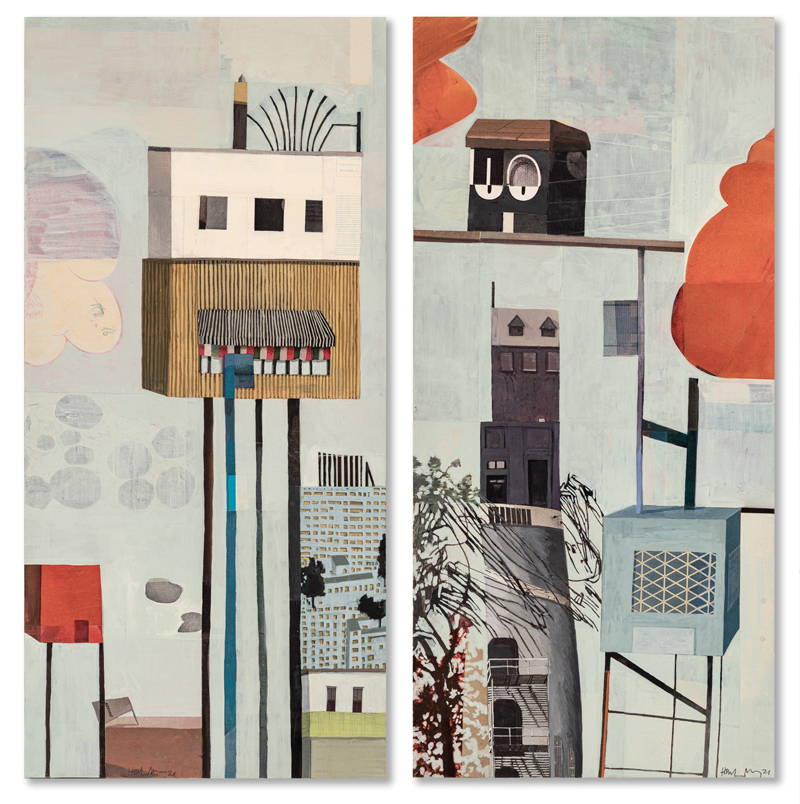
After the conclusion of the internship, Ward and Cohen stayed in contact and maintained their collaborative relationship. In his senior year of high school, Ward was able to secure a unique academic arrangement that allowed him to split his time between Montpelier High School and the Fleming Museum at UVM. Ward elaborates: “The principal of Montpelier High School at the time was a man named Michael McRaith. He started a unique educational initiative that allowed students to gain academic credit from working outside of school. It really gave me the flexibility to continue working towards my personal goals through the work I did at the Fleming Museum.”
Following his graduation from Montpelier High School, Ward was accepted into Williams College. “I came to Williams with the intention of becoming an Art History major,” says Ward. “I hit the ground running, and I took as many specialized art history courses as I could. I also started working at the Williams College Museum of Art and The Clark Art Institute, and I subsequently applied for an internship at the Massachussets Museum of Contemporary Art (MASS MoCA).”
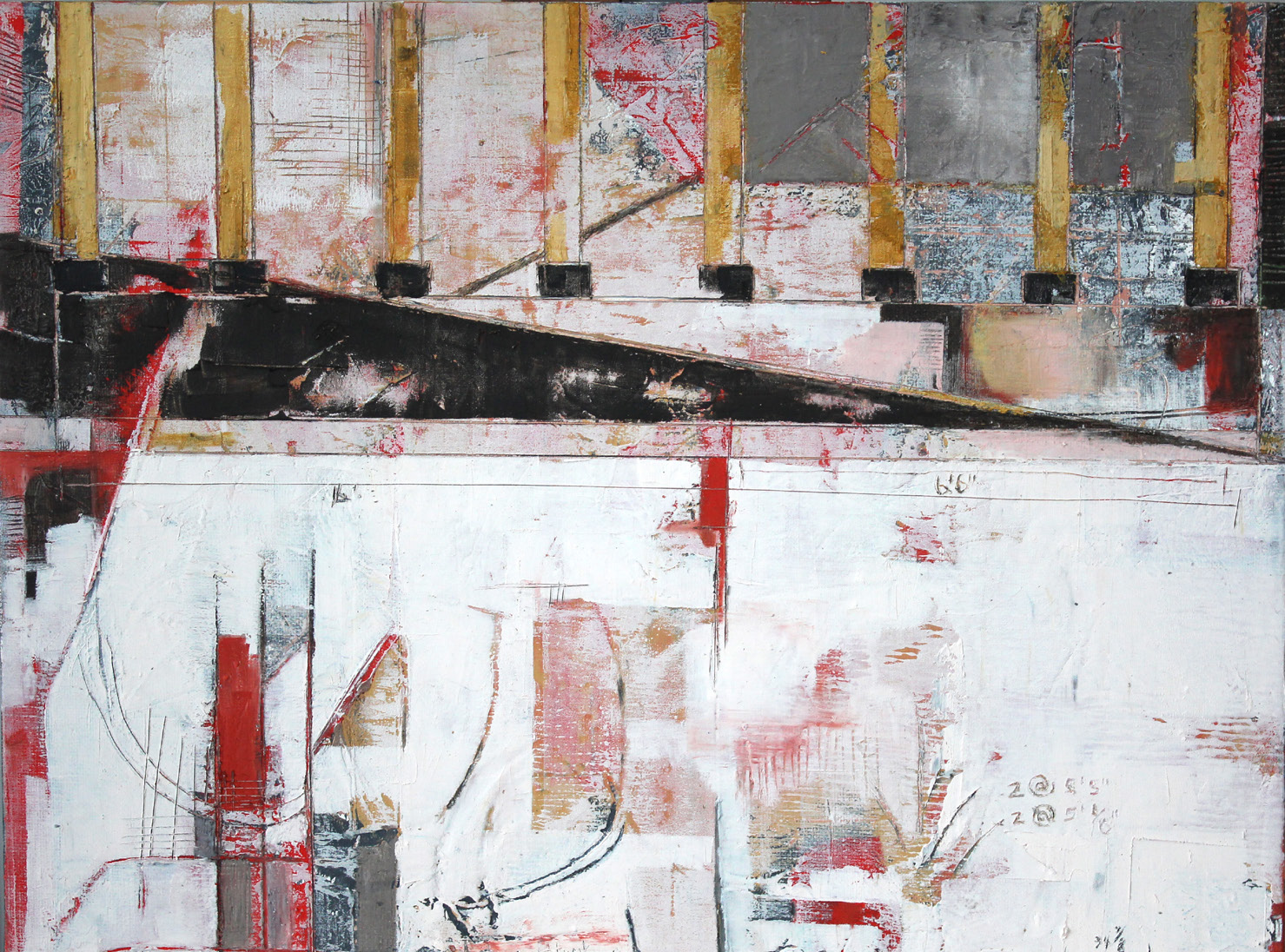
According to Ward, the time he spent at MASS MoCA allowed him to work at a museum that was entirely focused on collaborative partnerships with living contemporary artists. “Everything that MASS MoCA does is built around the relationships that they have built with leading contemporary artists,” notes Ward. “It was amazing to be able to meet some wonderfully talented artists, including Vincent Valdez.”
While Ward was interning at MASS MoCA, he had an epiphany. He realized that in addition to his interest in art history, he was also becoming incredibly passionate about working with artists to help them succeed and grow their brands. Ward then decided that he wanted to learn more about the business side of the art world. He applied for a job at the David Tunick Gallery in New York City and spent a summer there, learning about the subtle dynamics of the art industry. “I learned about how to successfully interact with people in a gallery setting, and also how to hang and transport art,” says Ward. “It was a great introduction to the more practical side of things, and I’m thankful that I got to work at a high-volume print gallery down in the city.”
In the summer after his sophomore year at Williams, Ward was eagerly looking forward to an internship at Christie’s auction house in New York City. Sadly, his plans were derailed by the rapid onset of the COVID-19 pandemic. “Christie’s did a wonderful job of pivoting the internship program from an on-site experience to an online class during the pandemic,” says Ward. “The classes were centered around the significant changes that were occurring in the art world at the time. I was able to learn a lot about the ever-fluctuating dynamics of the art business at an incredibly crucial moment.”
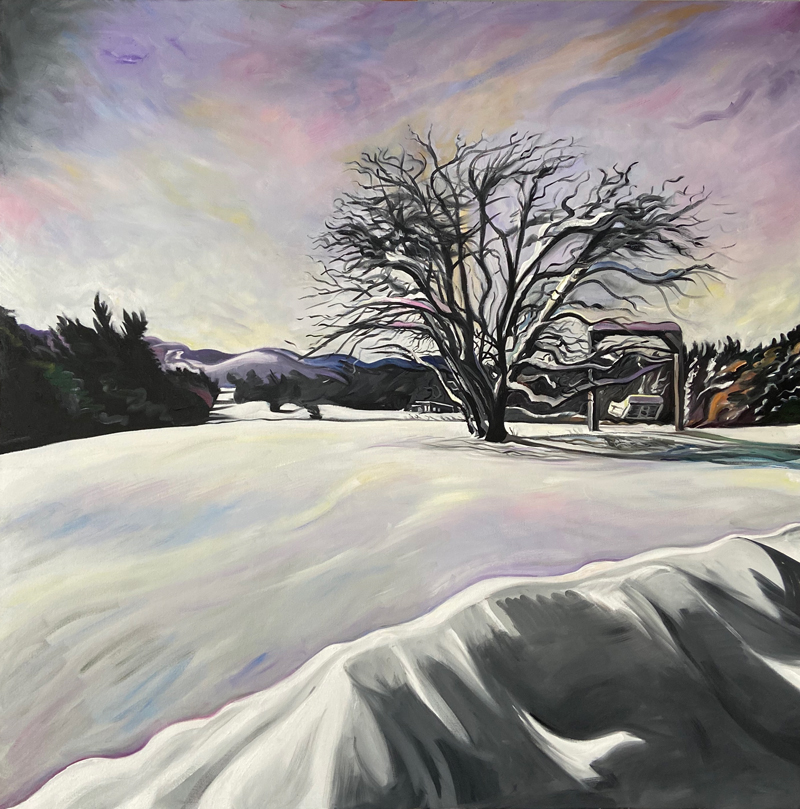
In the fall of 2020, the proverbial gears in Ward’s mind started turning when he remembered an exhibit that he had previously attended at the Kent Museum in his native town of Calais, Vermont. “I was blown away by the quality of the pieces that were created by Vermont-based artists. I thought, ‘This is something that the world needs to know about. The work of Vermont’s artists should have more of a place in the mainstream contemporary art market.’”
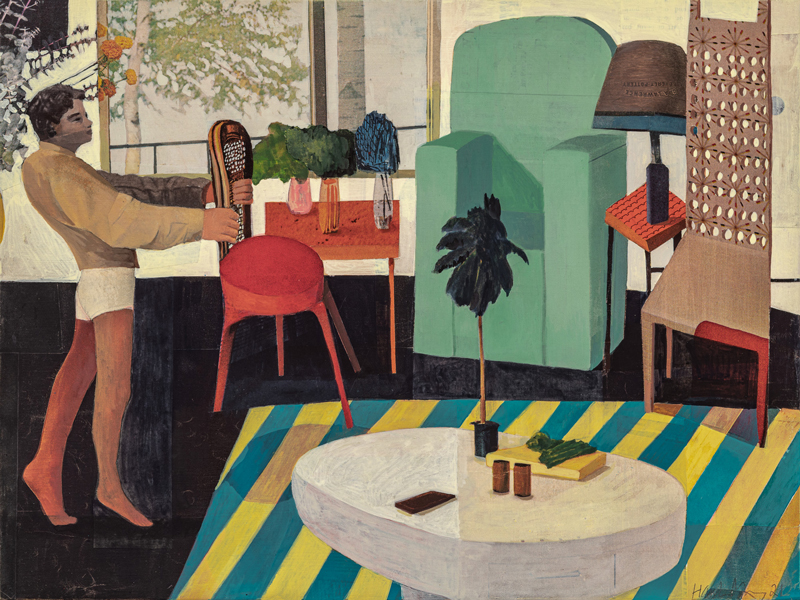
Following his initial revelation regarding Vermont’s contemporary art scene, Ward began reaching out to several trusted contacts in his professional circle over the next few months. Ward recalls that during the course of their conversations, an emergent idea began to take form. “My original thought was that I wanted to create an exhibition that was entirely dedicated to showcasing the incredible works of Vermont-based contemporary artists.”
After developing a relationship with a gifted Vermont-based artist named Matthew Monk, Ward built collaborative bridges with a number of additional artists, as well. Ward then reached out to Janie Cohen from the Fleming Museum at UVM to ask for her advice. “I started asking her questions like, ‘What kind of art are you seeing in Vermont’s galleries? What would you look for in a quality gallery exhibit?’ I learned a lot through those conversations. I also spoke with Paul Provost, who happens to be the head of Art Bridges America. He told me that I had already put a great group of prospective artists together – and that there was no reason not to go for it. There’s a considerable amount of responsibility that comes with working with artists in a gallery setting. They trust you to showcase their work in a way that appeals to prospective clients, so I wanted to make sure that I had laid the correct groundwork in place to create a successful business plan for my gallery exhibition.”
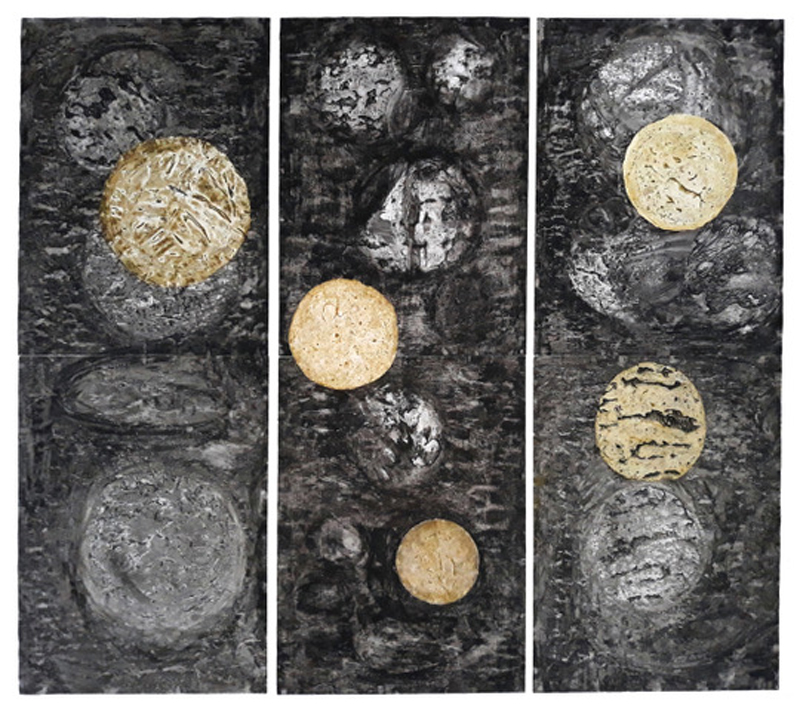
After Ward spent several months masterminding the financial and logistical specifics of the exhibit, he put the initial phases of his plan in motion. He designed a website for the SQD GALLERY when he was working as an intern at Global Cultural Asset Management, a well-respected arts consulting agency in Massachusetts. “I started having conversations with even more artists at that point, and I began to develop a cohesive vision for how I wanted to present the art in a gallery setting,” says Ward. In early 2021, Ward began choosing the artworks that would show at the gallery and talking with the Vermont Curators Group about putting together an online exhibition for their Vision 2020 exhibition initiative. “At the time, vaccines were not yet in wide circulation and case numbers had not yet started to lessen,” notes Ward. “I figured that I would start out online, then pivot to an in-person gallery setting. I named the gallery SQD, or ‘Stella Quarta Decima,’ which translates to ‘The Fourteenth Star’ in Latin. I wanted to use a name that paid tribute to Vermont, which was the fourteenth state officially inducted into the United States of America.”
As businesses and galleries began to gradually reopen in Spring 2021, Ward reached out to Jack Shainman. “Jack Shainman owns an amazing gallery with two great locations, one in New York City, and one in Kinderhook, New York,” says Ward. “In our conversation, he gave me some truly sage advice. He told me that I should start with a temporary gallery exhibition in a prime location, which would allow me to get my feet wet in the industry, test the waters, and learn from experience. He told me it would allow me to learn many important lessons that would help me advance in my career after college.”
Following his conversation with Shainman, Ward began to search for an ideal location for his gallery. He then made the decision to set up shop in Manchester. “My decision was influenced partially by Manchester’s proximity to Williams College – and also by its vibrant arts scene. I’m incredibly fortunate to have found this prime space here on Main Street opposite the Equinox Hotel, and I’m grateful to be showcasing the works of gifted Vermont-based artists at SQD’s first physical gallery exhibition.”
Ward says that the one of the primary factors that he looks for in the artworks that he showcases is a sense of kinetic energy. “Certain paintings have a real sense of movement and presence that is incredibly easy to connect to. Keith Haring’s work really does that for me. I love works that tap in to what I have come to regard as an ancient, primordial, creative energy. I also see those qualities in the work of Jamie Rauchman, who happens to be an artist that I am showcasing here at the SQD GALLERY. His landscape works have beautiful colors, and his brushstroke technique creates wavy lines that make the entire painting seem like it’s moving. It’s a remarkable sight.” Ward also appreciates when artists try innovative new things with previously-established mediums, such as Matthew Monk’s assemblage pieces, which are also showcased at SQD. “Monk does some very moving assemblage pieces. One of my favorite pieces is his ‘Grits Bag’ piece, where he incorporates the bag and integrates it into a complex and technical geometrical form. It creates a truly mesmerizing effect.”
By applying the lessons that he has learned from his multiple high-profile internships and gallery jobs towards the curation of his inaugural exhibit, Ward has been able to create a delicately-balanced and nuanced visual experience at SQD. “The way that you hang and light artwork has a significant impact on the overall experience of the viewer,” says Ward. “A lot of the decisions that you make as a curator are also determined by the qualities of the space that you are working with. Spaces that have four straight walls with no undulations or doors are ideal for straightforward presentation, but I like to think that spaces with unforeseen irregularities provide a fun challenge. They give me a chance to use my imagination and incorporate innovative strategies in terms of how I hang the different works.”
Ward adds that one of his main aims for the physical SQD Gallery is to create a cohesive and visually-intuitive experience that tells a spellbinding visual story. According to Ward, every artist has their own section throughout the room, and each section plays a part in creating a resonant and evocative visual narrative. “When I’m arranging an exhibit, I think of things like color themes and texture variations. I kept that in mind for each artists’ section for the exhibit here at SQD. When people are looking around the room, my hope is that they will be able to adjust and orient to the different artists’ styles and pick up specific variations and details between their works. Ideally, the exhibit will really allow patrons to see inside the minds of the artists and get acquainted with the subtle variations that are present within their portfolios. If you have an artists’ works spread out throughout the gallery in different areas, that can be a wonderful way to show art, but you might miss some of the smaller quirks in the personalities of the artists – and some of the smaller details that they bring to their pieces.”
As Ward looks towards the future, he remains grateful for the mentors who helped him build the confidence necessary to move forward with his personal goals. “Two of the most influential people who have helped me over the course of my academic journey have been Janie Cohen from the Fleming Museum of Art at UVM and Horace Ballard from the Williams College Museum of Art. Ballard is moving on from Williams to Harvard this year, but they have both played an essential role in my personal development by challenging me intellectually and encouraging me to wholeheartedly pursue my aspirations.”
Ward adds that for any other passionate young student or professional interested in following their dreams and starting a similar entrepreneurial project, it’s incredibly important to learn how to take rejection in stride. “Whenever you get involved in a self-started project, there has to be a certain expectation of failure. I’ve applied to plenty of programs that I haven’t gotten into and many jobs that I never even heard back from. The most important thing is to keep trying and to not get discouraged. I’ve learned something from every experience, including rejections. They motivate me to work harder, and they also make me more appreciative of my personal victories. I’ve found that if you can recognize the opportunities that are all around you and seize the chance to take action when the time is right, there’s no limit to what you can accomplish if you set your mind to it.”
ALL THE DETAILS
SQD Gallery
(Stella Quarta Decima)
3568 Main Street
Manchester, VT 05254
stellaquartadecima.com/anticipation
Open Thursday-Sunday
10AM-6PM
(Or by appointment)

